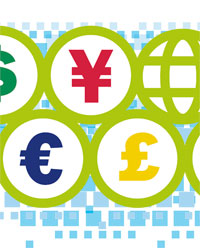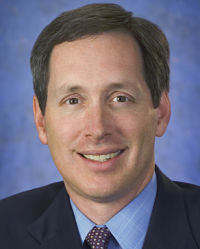 Treasuries are undergoing technological transformations to enable their corporations to grow and prosper in a difficult global marketplace. Take Itron, a technology company that builds electric, gas, water and thermal energy meters for utilities. Its 2007 acquisition of Actaris doubled its size overnight and catapulted the company, now with $2.4 billion in annual revenue, into complex global operations and exposures. Since the merger, Itron conducts business in 130 countries using 40-plus currencies through a highly decentralized structure.
Treasuries are undergoing technological transformations to enable their corporations to grow and prosper in a difficult global marketplace. Take Itron, a technology company that builds electric, gas, water and thermal energy meters for utilities. Its 2007 acquisition of Actaris doubled its size overnight and catapulted the company, now with $2.4 billion in annual revenue, into complex global operations and exposures. Since the merger, Itron conducts business in 130 countries using 40-plus currencies through a highly decentralized structure.
The merger was a wake-up call for what had been a basic domestic treasury function. Itron kicked off a finance and treasury reinvention by adopting leading-edge solutions, including migrating to a single global instance of an Oracle ERP system, implementing specialized applications from FiREapps, Reval and FXall, and an IT2 treasury workstation with SWIFT messaging integration.
Meanwhile, companies that have completed technology transformations are finding tactical ways to move to mobile access, cloud hosting, smarter data mining and reporting, tighter management of FX risks, and preparing for electronic bank account management (eBAM).
The two biggest differentiators of the new generation of technology are cloud hosting and mobile access to treasury software, notes Bob Stark, vice president of marketing for treasury workstation vendor Kyriba.
“The heaviness of treasury systems is dropping away,” Stark observes. “Three years ago, it was all about gaining complete visibility to liquidity and counterparty risks. Now the goal is shifting to using that information to make better decisions.”
At Itron, which also makes software and communications tools for utilities, people came before technology. Itron CFO Steve Helmbrecht first made sure he had a sophisticated treasury team with global chops and plenty of tech experience to handle the new tools.
Byron Jackson, an assistant treasurer at Motorola who was instrumental in the company's 2003 Alexander Hamilton Award-winning cash management project, signed on as treasurer in 2008. Ed Barrie, who had been a leader in Microsoft's much-decorated treasury, was recruited in 2009 to head up treasury operations and global foreign exchange.
Rounding out the global treasury team at Liberty Lake, Wash.-based Itron are Kimberly Millikan, director of capital markets; Yvonne Tanak, director of risk management; and Guillaume de Contenson, director of international treasury.
When Itron looked at its priorities, managing foreign exchange topped the list. “We had more than 50 subsidiaries in 40 countries, each of which was buying and selling in local currencies as well as in non-functional currencies,” Barrie recalls. And each unit used a different instance of a legacy ERP system with a distinct and separate chart of accounts.
“Our exposures at the subsidiary level were hard to see,” he adds. “The only hedging we could do was at the Itron Inc. level and at our offshore finance operation” (a mini in-house bank that handles intercompany loans, located in Luxembourg).
So the first big step was to bring in FiREapps. “We had to start by getting our hands around our global FX balance sheet exposures and build out the technology to support an effective hedging program,” Barrie says. “We needed FiREapps. That system is able to pick up the [general ledger] balances of all the subsidiaries, normalize them and map them to our corporate chart of accounts so that we can clearly see our exposures globally.”
FiREapps packages that visibility just the way the treasury team wants to see it. “We tag our exposure by 18 categories like cash, intercompany, trade AP and trade AR, and we can see our exposures by category, as well as by currency and subsidiary,” Barrie explains. “These are robust analytics that bring our balance sheet exposures into sharp focus and allow us to manage them with targeted hedging.”
Much of the analysis focuses on changing exposures. FiREapps reports spot changes and allows treasury to drill down to what's driving them “so we can have conversations with local controllers about the situations,” Barrie says. “We find out if it is a temporary blip or some shift in the fundamentals.”
Barrie suggests Itron will keep the FiREapps program even after the global rollout of Oracle standardizes the company's ERP environment and the IT2 workstation aggregates a lot of treasury data.
“In fact, we plan to expand our use of FiREapps from balance-sheet analytics by piloting their revenue and expense analytics, and start to see and control exposures in our income statement,” he says. “Once we can do the analysis, we can further develop our FX hedging programs.”
 Itron is already on top of its balance-sheet FX changes down to the twitch level. Compared to any treasury workstation—Itron looked closely at five before picking IT2—FiREapps is a sharp-edged tool. “None of the workstations can pull data from the ERPs and slice and dice it like FiREapps can,” Barrie says. “You can upload data into a workstation at the corporate or subsidiary level, but you can't mine it and analyze it in a workstation like you can in FiREapps. They own the niche for pre-trade data abstraction and analytics. That's their sweet spot.”
Itron is already on top of its balance-sheet FX changes down to the twitch level. Compared to any treasury workstation—Itron looked closely at five before picking IT2—FiREapps is a sharp-edged tool. “None of the workstations can pull data from the ERPs and slice and dice it like FiREapps can,” Barrie says. “You can upload data into a workstation at the corporate or subsidiary level, but you can't mine it and analyze it in a workstation like you can in FiREapps. They own the niche for pre-trade data abstraction and analytics. That's their sweet spot.”
But Itron wanted razor-sharp tools that even FiREapps can't provide.
“FiREapps shows you what to expect,” Barrie explains. “But now we load in our actuals and analyze the delta [deviation] with a decomposition model we built ourselves. At month-end close, we see how much of a gain or loss we had that month from FX. With our decomposition model, we're able to see how much of that gain or loss was from mismatched hedging, trade-rate differences, from cash conversions or from transactions that were booked at something other than the income statement rate.”
The result is more effective control over balance sheet volatility related to FX and “more comfort that our data are accurate and consistent,” Barrie says. “We're now hedging 25 to 30 currency pairs a month, using one-month forward contracts, outright forwards for deliverable currencies and non-deliverable forwards for untradeable currencies, and hedging exposures on an aggregated corporate basis.”
“Our reason for this,” notes CFO Helmbrecht, who's pictured above, “was to reduce volatility of financial results through a prudent and well-managed hedging program. With this effort, we are streamlining internal processes and lowering our operational costs, both of which are key components of the long-term financial strength of our company.”
Itron will continue to use Reval for derivative accounting and risk management and FXall for multibank FX trading, and will employ IT2, its first global treasury workstation, primarily to get global cash visibility through prior and current-day bank statements, delivered via its SWIFT service bureau; perform automated bank account reconciliation; issue global cash forecasts; track intercompany loans and bank mandates, and generally centralize and standardize all banking information, Barrie explains.
Itron is not likely to leverage the technology platforms of individual banks. “We're a global company that is a collection of local companies,” Barrie says. “Our business is driven by local country requirements. We could never use one global bank to process all our transactions. We will pay and collect locally but concentrate to our relationship banks, relying on SWIFT and multibank, third-party software for communication. We want to leverage technology as much as possible to streamline our operations and solve business problems.”
Big Boost From Small Enhancement
Itron launched a big project to make big changes and earn big rewards, but sometimes a single enhancement by one vendor can bring a tactical breakthrough with little effort.
For $1.2 billion Cadence Design Systems in San Jose, Calif., that breakthrough is Clearwater Analytics' new Beta reporting capability, notes treasury manager Craig Cutright, who oversees investments of $500 million in various cash portfolios.
Until recently, hosted services offered canned reports, he notes, and users had to adjust their operations to fit standard reporting options. Now Beta gives Clearwater users flexibility.
“We can change the reporting on the fly to get just what we want,” Cutright says. “We can start with one of the standard reports and modify it, or we can start from scratch and grab whatever data we want and produce reports in any format, including Excel and PDF. This is a big step forward. We're saving a lot of time we spent manually modifying the old canned reports. I hope other providers of hosted services will follow this lead.” —Richard Gamble
For more stories about tech transformations, see Achieving Efficiency with a Single Instance of ERP and EADS Treasury Opts for Risk Management Muscle.
© 2025 ALM Global, LLC, All Rights Reserved. Request academic re-use from www.copyright.com. All other uses, submit a request to [email protected]. For more information visit Asset & Logo Licensing.




